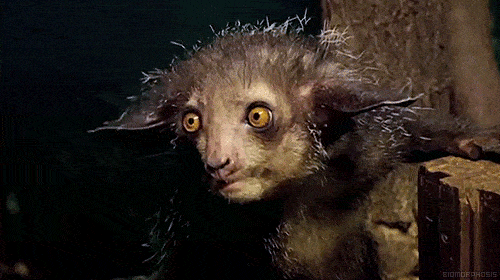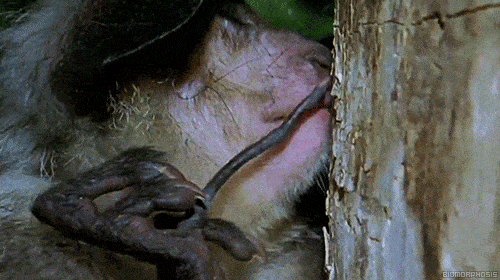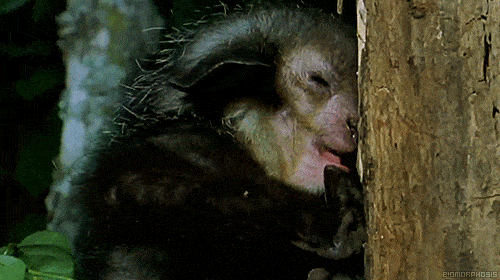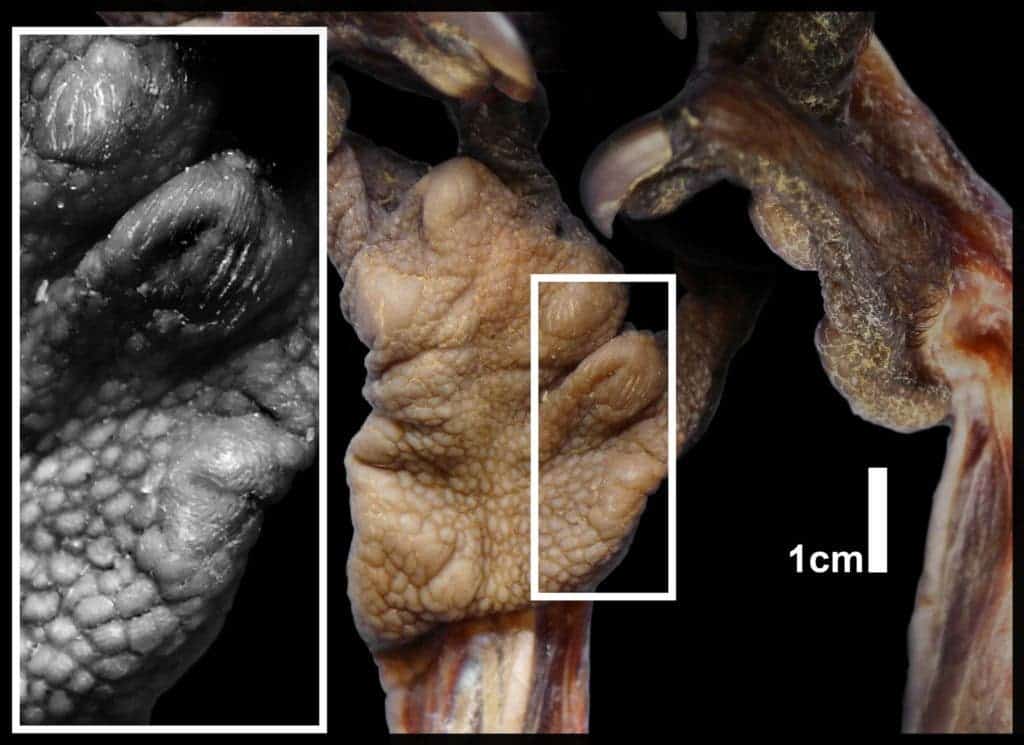Exclusively found in the north-eastern parts of Madagascar, the aye-aye (Daubentonia madagascariensis) is a dark-brown or black primate, distinguished by a bushy squirrel-like tail that is larger than its body, bat-like ears, and an over-sized, slender middle finger. But although the species has been known to science since the mid-1800s, scientists have just now discovered that the aye-aye has a sixth digit — a tiny pseudothumb that likely helps the creature grip branches.

The aye-aye uses its exaggeratedly long middle finger to forage for food, typically insects lying within hollow branches. The primate first uses its keen ears to listen for the activity of unsuspecting grub, after which it uses its rodent-like incisors to gnaw through the bark of the branch to make an opening for its middle finger, which is slender enough to nudge right through the hollow tree branch. The finger has a ball-and-socket joint, similar to a human shoulder, which allows a fantastic degree of motion. At the tip of the finger, the aye-aye has a hooked nail that can snag and drag out prey.


Unfortunately for our adorable-looking aye-aye, humans on the island don’t think of it too fondly. Its bizarre appearance is frightening to the locals, and its eery call doesn’t help too much in this regard. According to ancient Malagasy legends, the aye-aye is considered a symbol of death. The natives believe if an aye-aye ever points its middle finger at you, then death will surely soon befall. For this reason, the poor aye-ayes are often killed on sight by superstitious locals. Due to this persecution, as well as habitat loss, the aye-aye is listed as critically endangered, with experts estimating fewer than 1,000 individuals left in the wild. Perhaps that middle finger is rightfully called for.

New anatomical insights, however, are making things more complicated. According to a new study led by Adam Hartstone-Rose, a biologist at North Carolina State University, the aye-aye actually has six digits, which means there’s no actual middle finger. Take that!
“The aye-aye has the craziest hand of any primate,” says Adam Hartstone-Rose, associate professor of biological sciences at NC State. “Their fingers have evolved to be extremely specialized – so specialized, in fact, that they aren’t much help when it comes to moving through trees. When you watch them move, it looks like a strange lemur walking on spiders.”
The reason why it hasn’t been found thus far has to do with the pseudothumb’s anatomy. The bone itself is very small, whereas the rest of the finger is mainly made of cartilage and muscle, which doesn’t show up on X-rays.
The researchers found the tiny thumb by accident while they were employing dissection digital imaging techniques on six aye-ayes. They noticed that one of the hand tendons split from the base of the thumb, heading towards a wrist bone called the radial sesamoid (humans don’t have it).
“Using these digital techniques allows us to visualize these structures in three dimensions, and to understand the organization of the muscles which provide movement to the digit,” says Dickinson, who built the digital model of the anatomy and is co-first author of the paper.
“The pseudothumb is definitely more than just a nub,” Hartstone-Rose says. “It has both a bone and cartilaginous extension and three distinct muscles that move it. The pseudothumb can wriggle in space and exert an amount of force equivalent to almost half the aye-aye’s body weight. So it would be quite useful for gripping.”
According to the researchers, the aye-aye’s elongated middle finger gymnastics doesn’t allow for a very good grip on branches. Like the panda, which also has a pseudothumb, the aye-aye likely uses this extra digit to grasp branches. Besides the aye-aye and pandas, moles also have six digits, which they employ to move more dirt.
“Other species, like the panda bear, have developed the same extra digit to aid in gripping because the standard bear paw is too generalized to allow the dexterity necessary for grasping,” Hartstone-Rose says. “And moles and some extinct swimming reptiles have added extra digits to widen the hand for more efficient digging or swimming. In this case, the aye-aye’s hand is so specialized for foraging an extra digit for mobility became necessary.
“Some other primate species have reduced digits to aid in locomotion. The aye-aye is the first primate to dial digits up in the hand rather than dial them down. And it’s amazing that it’s been there the whole time, in this strangest of all primates, but no one has noticed it until now.”
The findings were described in the American Journal of Physical Anthropology.



